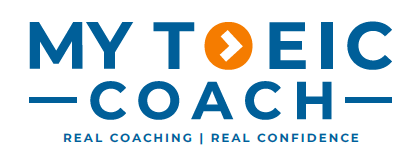Before You Solve Past Questions: 3 Things to Master First
Why Real Progress Starts Before the Practice Test
A lot of learners hit a wall without realizing why.
They’re doing the work. They're motivated. They're disciplined.
But… their score doesn’t move.
So what do they do?
More past tests.
Then more.
And more.
But here’s the truth: repeating full tests without mastering the skills underneath is like driving in circles — the speedometer moves, but you're going nowhere.
🏁 Think Driving School, Not Driving Test
You don’t pass your driving exam by taking it every day.
You pass by training: parking, signaling, checking mirrors, handling roundabouts.
TOEIC is the same.
The test isn’t just about “English.” It’s about applying strategy, under pressure, across a very specific format.
And just like driving, knowing the rules of the road is more important than guessing which road comes next.
✅ So before you touch another practice test — lock in these three things:
1️⃣ Know the Road Rules: Master the TOEIC Format
If you don’t know what’s coming, you’ll always be reacting. That costs time, focus, and accuracy.
Every part of TOEIC has its own logic:
Part 1 is visual — but not always literal. They love to trick you with plausible but wrong options.
Part 2 demands lightning-fast decision-making from a single sentence.
Part 3 and 4 are all about previewing questions and targeted listening.
Part 5 and 6 hinge on spotting grammar patterns and distractor traps.
Part 7 tests your ability to find—not read—information.
🛣️ Just like a driver needs to know what a flashing yellow light means, a test-taker needs to know what that long-winded Part 3 distractor is really doing.
If you skip this, every test becomes a guessing game. And the worst part?
You won't even know why you got a question wrong.
2️⃣ Use Mirrors, Not Just Gas: Reflect on Your Strategy
Doing 100 questions doesn’t help if you don’t look at how you answered them.
When a coach teaches driving, they don’t just tell you to turn the wheel.
They say:
Why did you make that turn?
What were you watching for?
Did you check your mirrors?
TOEIC is no different. Before moving on to the next question, ask:
“Did I answer with confidence or guess?”
“Was I fooled by a trap? If yes, what kind?”
“Did I run out of time?”
Every wrong answer holds a key. But most people toss that key away.
They move on too fast. They forget to learn the lesson.
🔑 Real improvement comes from strategy reflection — not repetition.
3️⃣ Don’t Practice the Highway Yet: Train Micro-Skills First
You don’t teach someone to drive by putting them on a highway Day 1.
You start with:
Turning in a parking lot
Checking blind spots
Controlling the pedals
Building habits
Test-takers who make real progress don’t start with full tests.
They build muscle memory:
Listening to 10 Part 2 questions on loop until their brain picks up the response patterns
Speed-reading short messages from Part 7 with a 10-second timer
Spotting grammar traps in isolation before doing Part 5 sets
⛽ Micro-drills create efficiency.
Efficiency leads to speed.
Speed gives you time.
Time gives you calm.
And calm lets you focus.
🧭 Past Tests Are a Mirror, Not a Map
A practice test tells you where you are, not how to move forward.
If you use it too early, it feels like failure.
If you use it too late, it reveals nothing.
The right time to start doing full past questions is after you’ve built:
Familiarity with every part’s logic
Skills that are stable under time
Awareness of your own patterns
That’s when a past test becomes diagnosis, not disappointment.
🚗 Start Smart — Don’t Burn Out Early
The learners who burn out don’t burn out because of laziness.
They burn out because they keep trying to drive at full speed — without ever checking their alignment.
TOEIC is a skills test disguised as a language test.
And the only way to win is to learn how the game works, why the traps are there, and what kind of driver you want to be.
You don’t need more gas.
You need a better map, a coach in the passenger seat, and the right road signs.
Let’s get those in place — and then, the road is yours.
Want to Learn More?
Our blog is full of practical strategies that help test-takers like you build better habits, overcome common blocks, and improve TOEIC scores through smarter, easier methods. Try our free TOEIC Block quiz now!
